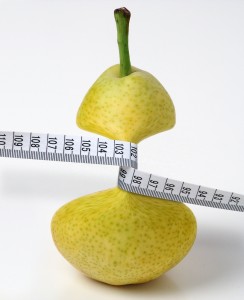
Bulimia nervosa (BN) is an eating disorder; the diagnosis of which requires: persistent preoccupation with eating and an irresistible craving for food, episodes of overeating in which large amounts of food are consumed over a short period of time and potentially attempts to counteract the “fattening” effects of food by self-induced vomiting or laxative abuse.
Additionally people with BN may alternate binging with periods of starvation, appetite suppressing or thyroid medications among others. Generally speaking this appears to be due to a morbid dread of fatness whereby the patient sets themselves a weight threshold well below their healthy weight (WHO, 2007). Prevalence estimates for the illness range from 1.1 to 4.2% with females accounting for 85–90% of individuals with BN (Wentz, 2009).
Fortunately a number of treatments for BN have been developed. These primarily include talking and drug therapies. Unfortunately eating disorders are often difficult to treat and as such are associated with high health care costs. As health care costs grow generally, the pressure to examine the cost-effectiveness of any intervention also increases.

This study examined the cost effectiveness of stepped care compared to CBT for the treatment of bulimia
The aim of the study in question was to examine the cost effectiveness of stepped care (SC) as opposed to cognitive behavioural therapy (CBT) for the treatment of BN. SC in this case refers to a series of interventions increasing in intensity and expense, applied as the clinical need arises. CBT refers to an intensive psychological talking therapy.
Methods
Participants in the study were 293 women diagnosed with BN of the purging or non-purging type as defined by the Diagnostic and Statistical Manual IV. They were randomly assigned to receive CBT (147 patients, average age: 29.5 years) or stepped care (146 patients, average age: 29.8 years), both with the addition of an antidepressant as necessary. Participants were followed for 1 year after the conclusion of their treatment.
Treatment outcome was measured using:
- The Eating Disorder Examination
- A self-administered Quality of Well Being Scale
- Participants were provided with Health Care Diaries to record health care costs
- A Family/Significant Other Questionnaire (FSOQ) was completed on a voluntary basis by a family member or significant other nominated by the participant
The FSOQ was used as an indirect measure of time costs associated with having a relative with BN. Abstinence from binge eating has been considered the most desirable goal in the clinical treatment of BN and as such was used as one of the most important outcome measures in this study.
For the main cost-effectiveness analysis, direct medical costs were used. Societal costs are obviously of great importance to providers, patients and their families but could not be looked at in this instance due to a lack of accurate measures. It was also felt that as this study was based in the United States of America (USA), the direct costs of an intervention are the costs most likely to be considered by a third-party payer when evaluating an intervention.
Results

Abstinence at the end of the 1 year follow-up was observed in 18% of participants receiving CBT and 26% of patients receiving SC
- Abstinence at the end of the 1 year follow-up was observed in 18% of participants receiving CBT and 26% of patients receiving stepped care (SC)
- Cost-effectiveness ratios represent the cost per abstinent participant at the end of the observation period for each treatment. For CBT the cost effectiveness ratio was $20,317 per abstinent participant and for SC it was $12,146
- Following statistical corrections for uncertainty in measurements of cost effectiveness ratios, it was found that in 81% of cases, SC was more effective and cost less than CBT
Importantly, overall ratings of quality of life improved throughout the study. The improvement in quality of life ratings following treatment was significant (P<0.001) with individuals achieving abstinence, perhaps unsurprisingly, reporting the greatest improvement in quality of life in comparison to those who did not (P<0.003).
A total of 28% of participants agreed to have a family member or significant other complete the FSOQ. This found that time taken up with the participant’s BN decreased substantially over the first 18 weeks of treatment.
Conclusion

Stepped care was cheaper and more effective than CBT
- The authors concluded that the stepped care intervention was more effective and cost less than the CBT intervention for bulimia nervosa
- They also concluded that as one would hope, treatment was associated with an improvement in the participants’ quality of life and that more successful treatment was associated with a greater increase in quality of life
Positives and limitations
The sample size for this study was of a reasonable size and the intensity and quality of clinical effectiveness measures were adequate. Participants were included from across four treatment centres and nationwide standard costs were used for analysis to allow for greater generalisability (at least in the USA) of results.
A longer follow-up period for patients would have provided a more useful picture of treatment effectiveness and of costs. As discussed, while some effort was made to look at the time costs of having bulimia nervosa, most other societal costs were not examined.
Links
- Crow. S. J., Agras. W. S., Halmi. K. A., Fairburn. C. G., Mitchell. J.E., &. Nyman. J. A. A Cost Effectiveness Analysis of Stepped Care Treatment for Bulimia Nervosa (PDF). Int J Eat Disord. 2013; 46: 302-7.
- World Health Organisation. ICD-10 Online: Current Version (2007). Chapter V: Mental and Behavioural Disorders. (F00-F99). http://apps.who.int/classifications/apps/icd/icd10online/. Accessed 21st June 2013.
- Wentz. E. I., Gillberg. C., Anckarsater. H., Gillberg. C., &. Rastam. M. Adolescent-onset Anorexia Nervosa: 18-year outcome (PDF). The British Journal of Psychiatry. 2009; 194: 168–74.

Cost effectiveness analysis finds stepped care to be cheaper and more effective than CBT for bulimia nervosa. http://t.co/Yo9pjcnt0g By me.
RT @Mental_Elf: Cost effectiveness analysis finds stepped care to be cheaper & more effective than CBT for bulimia http://t.co/92iJnIWrfU
@scienceofeds Seen this study? MT @Mental_Elf: … stepped care cheaper & more effective than CBT for BN http://t.co/92iJnIWrfU
@couragesings @Mental_Elf Yup, I have. I read it.
Useful: “@Mental_Elf: Cost effectiveness analysis finds stepped care cheaper & more effective than CBT for bulimia http://t.co/fzL1uu8RMF”
This study examined the cost effectiveness of stepped care compared to CBT for the treatment of bulimia: http://t.co/vQwF0eqMQF
A cost effectiveness analysis finds stepped care to be cheaper and more effective than CBT for… http://t.co/GVy4ScVxJ3
Cost effectiveness analysis finds stepped care cheaper and more effective than CBT for bulimia nervosa. http://t.co/Yo9pjcnt0g By me.
Cost effectiveness analysis finds stepped care more effective than CBT for bulimia. Me for @Mental_Elf http://t.co/Yo9pjcnt0g … By me.
My erstwhile colleague @hullodave wrote this http://t.co/jGpYnGoFDm on CBT and Bulimia. Also, I don’t really know what erstwhile means.
Although it used a US perspective, the study found that stepped care was cheaper and more effective than CBT: http://t.co/vQwF0eqMQF
@Mental_Elf Just to clarify, a CBT based, stepped care approach was cheaper and more effective than individual CBT.
Stepped care more cost effective than CBT in treating bulimia nervosa via @healthpsychuk http://t.co/wqYJXwpGPn #mentalhealth
[…] Les omtalen i The Mental Elf her […]